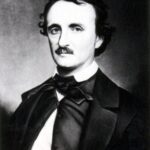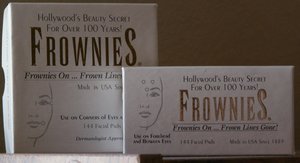If you are ever called upon to consider the Broadway musical today you doubtlessly think of names like Stephen Sondheim and Andrew Lloyd Webber. You probably also think of extravagant productions based on everything from Billy Wilder movies to T.S. Eliot poems. Today, a story about real people that integrates songs into the texture of a plot that could conceivably be interesting even if there was no music is the standard.
For much of Broadway’s early history, however, the standard musical was really just that: a collection of musical standards upon which the barest foundation of a (sometimes) coherent story was centered. It was not unusual for the bulk of the songs in a Broadway musical to be entirely irrelevant to the story that took place when nobody was singing. And for the most part that story would be about show business because, after all, the idea of gangsters or baseball players suddenly bursting into song was utterly absurd.
What took place on the evening of March 31, 1943 changed all that forever.
Although there had been occasional hits that featured non-entertainer characters singing (Showboat being the biggest), even these had still centered around entertainers. One can only imagine the reaction that the team made up of such legendary lights as Agnes DeMille, Rodgers and Hammerstein and Rouben Mamoulian got when they pitched the idea of a musical about cowboys that didn’t even have the good sense to be about Annie Oakley or Buffalo Bill’s Wild West show. These four radical, and some might even say crazy, artists embarked up what may well be the most extreme gamble in show business history, matched only by that time a whimsical Italian fella once said, “Sure, Keanu Reeves would probably be great in my version of Bram Stoker’s Dracula.” Well, you know; sometimes you win and sometimes you lose.
That show was, of course, Oklahoma! And today it is almost impossible to fully apprehend the significance of just how risky a chance it was to mount a Broadway musical that revolved around a sweet little farm girl involved in an ultimately violent love triangle. Cowboys singing and dancing? And they aren’t putting on a show? Inconceivable! Adding to the impossible dream was that choreographer Agnes DeMille had decided to introduce an extended ballet sequence in the opening act. Okay, so it’s not just enough to tell the backers that your Broadway show will be about cowboys, it’s also going to have cowboys dancing ballet style. Get out of here!
Amazingly enough, it worked. Oklahoma! worked despite the fact that it was also quite sexually suggestive for its time as well as producing a character, Jud, who ranks among the most psychotic and threatening figures in Broadway musical history. Let’s face it; Jud could kick the Phantom of the Opera’s ass right down into the sewers of Paris. And as if that weren’t enough, it was also a better than average history lesson. In retrospect, audiences used to the Florenz Ziegfield templates of musicals being little more than recognizable recording stars surrounding by a bevy of beautiful girls should have rejected Oklahoma! outright. Instead, the show served to revolutionize the medium. In less than a decade audiences would be accepting singing gangsters, sailors, baseball players and even bald-headed Siamese kings.
If only Coppola’s gamble with Keanu had turned out so well.





